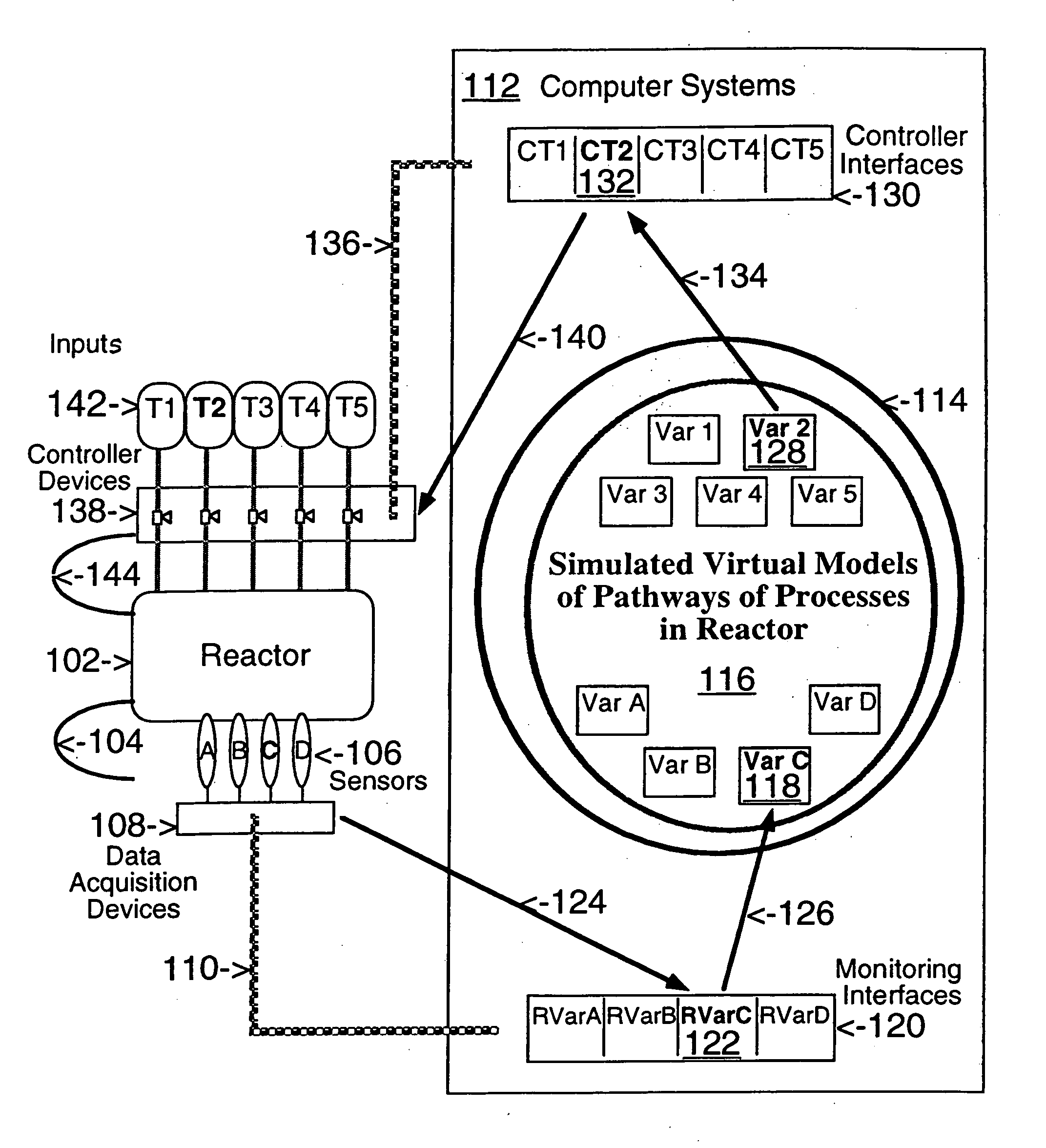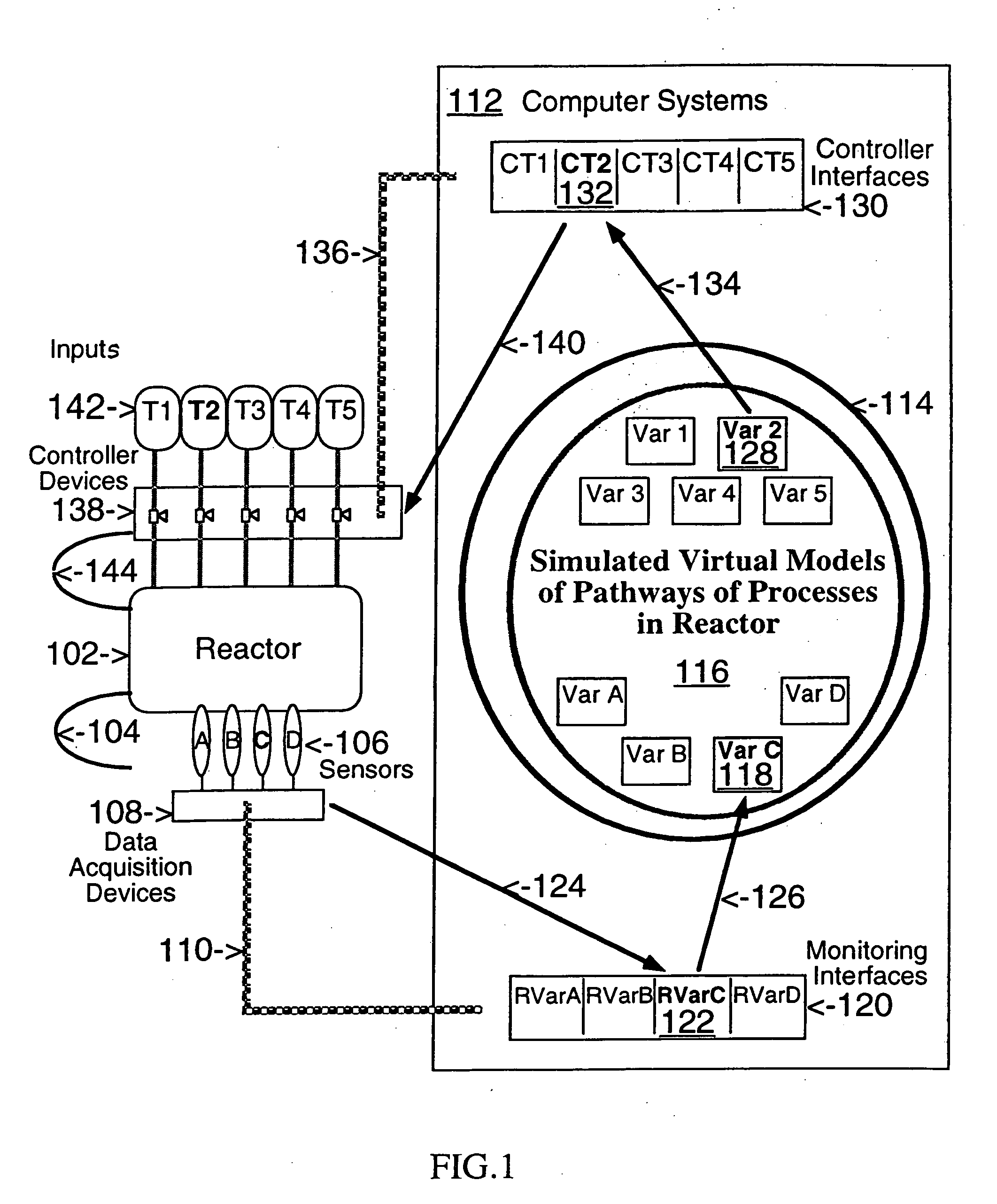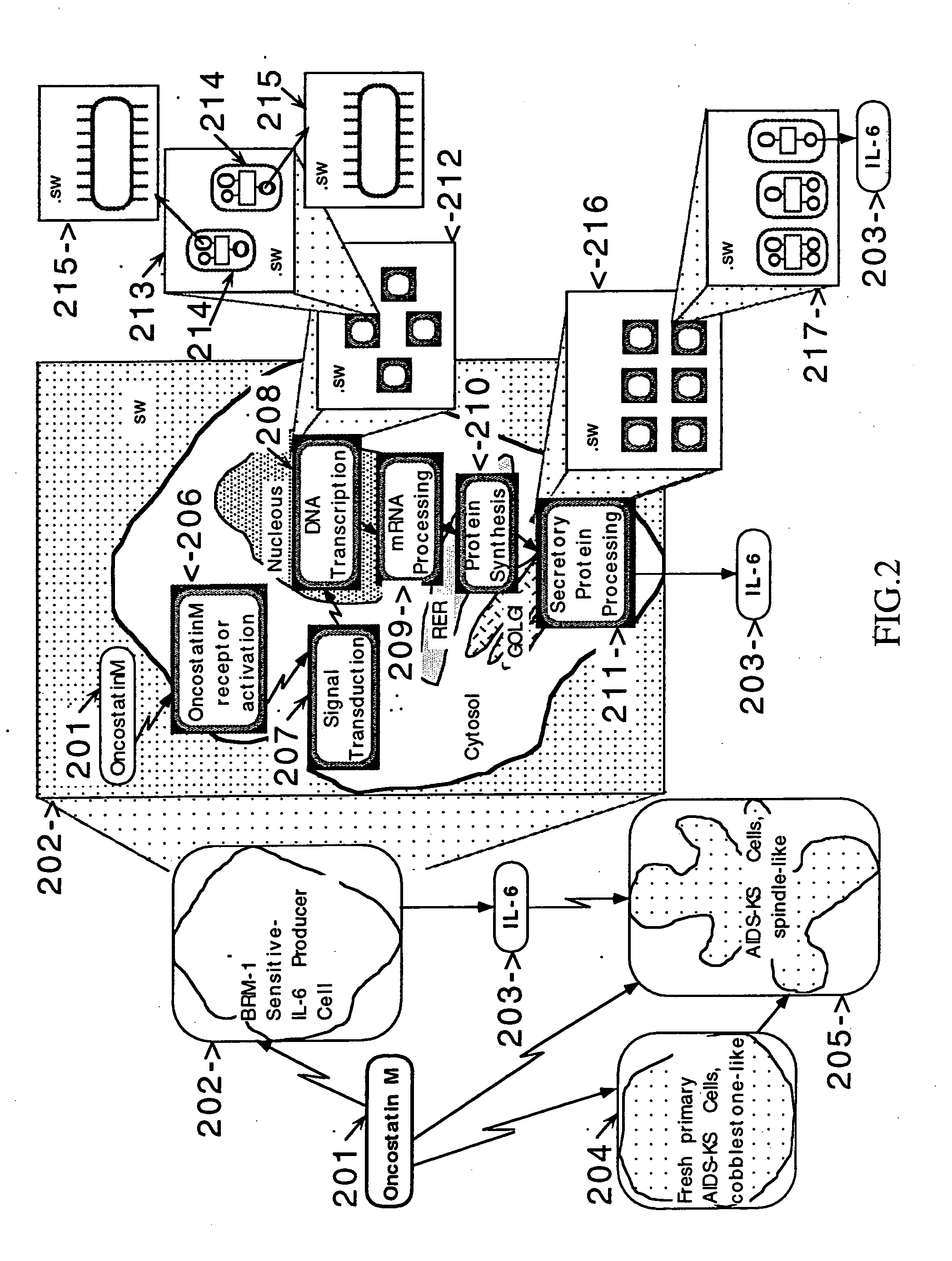Network models of biochemical pathways
a biochemical pathway and network model technology, applied in the field of network models of biochemical pathways, can solve problems such as complexity, current systems, and ultimate complexity of using a whole animal as the live factory
- Summary
- Abstract
- Description
- Claims
- Application Information
AI Technical Summary
Benefits of technology
Problems solved by technology
Method used
Image
Examples
Embodiment Construction
[0064] Notes: The body of the present application has sections that may contain some discussion of prior art teachings, intermingled with discussion of innovative and specific discussion of the best mode to use that prior art in this invention as presently contemplated. To describe the preferred embodiments, it is necessary to include in the discussion the capabilities offered by the shell used as development and deployment framework for this invention (hereafter referred to as “the Shell”). The applicant specifically notes that statements made in any of those sections do not necessarily delimit the various inventions claimed in the present application, but rather are included to explain how the workings of an existing set of tools is used to illustrate the preferred embodiments of the new tools and applications claimed in the claims section. The currently preferred embodiment of this invention, as described in the present application, is based on the definitions of a particular She...
PUM
| Property | Measurement | Unit |
|---|---|---|
| concentration | aaaaa | aaaaa |
Abstract
Description
Claims
Application Information
 Login to View More
Login to View More - R&D
- Intellectual Property
- Life Sciences
- Materials
- Tech Scout
- Unparalleled Data Quality
- Higher Quality Content
- 60% Fewer Hallucinations
Browse by: Latest US Patents, China's latest patents, Technical Efficacy Thesaurus, Application Domain, Technology Topic, Popular Technical Reports.
© 2025 PatSnap. All rights reserved.Legal|Privacy policy|Modern Slavery Act Transparency Statement|Sitemap|About US| Contact US: help@patsnap.com



